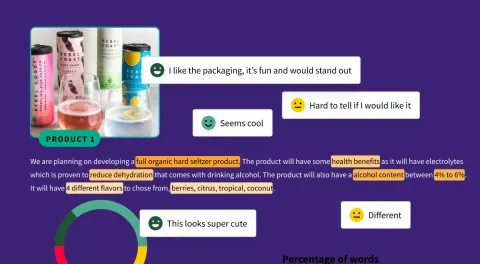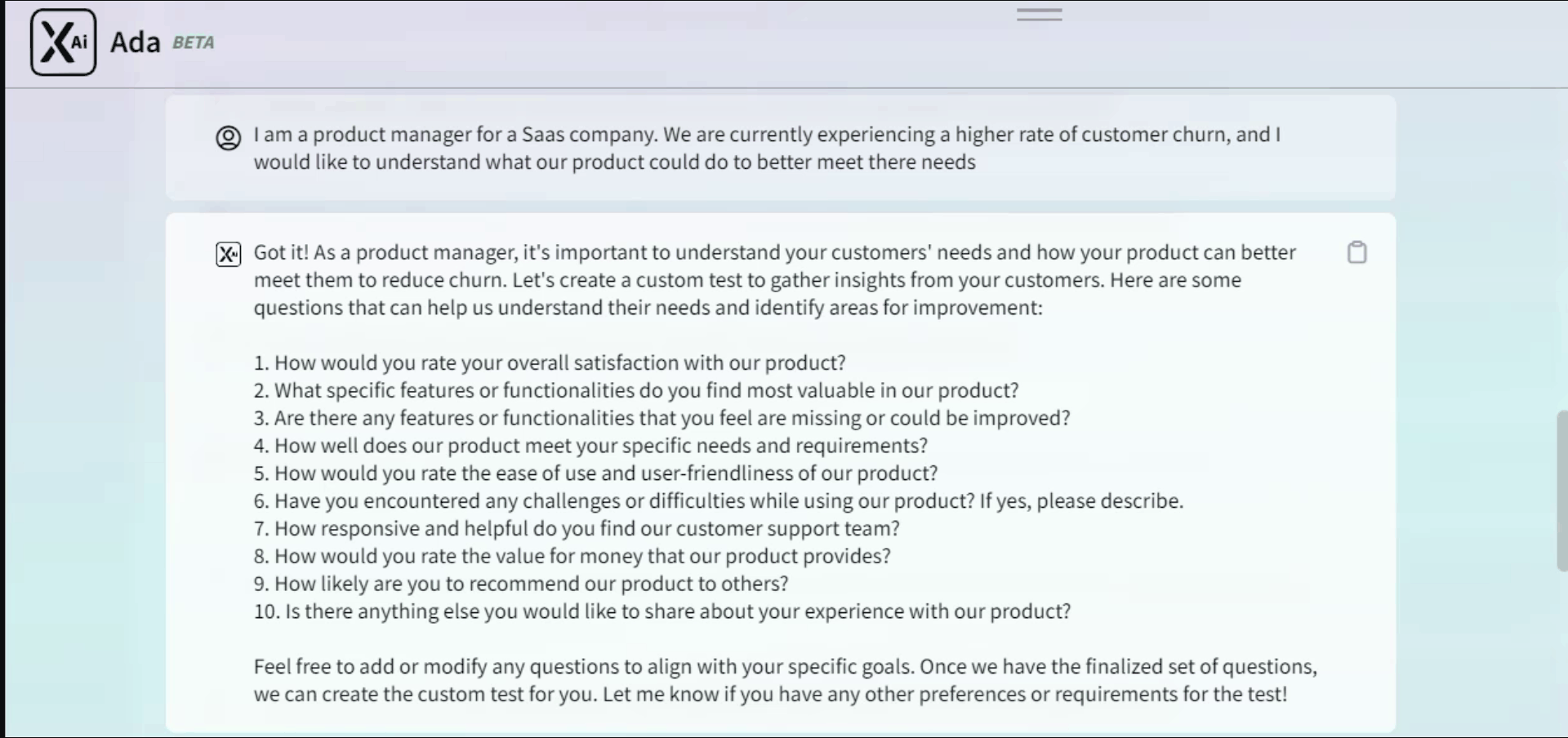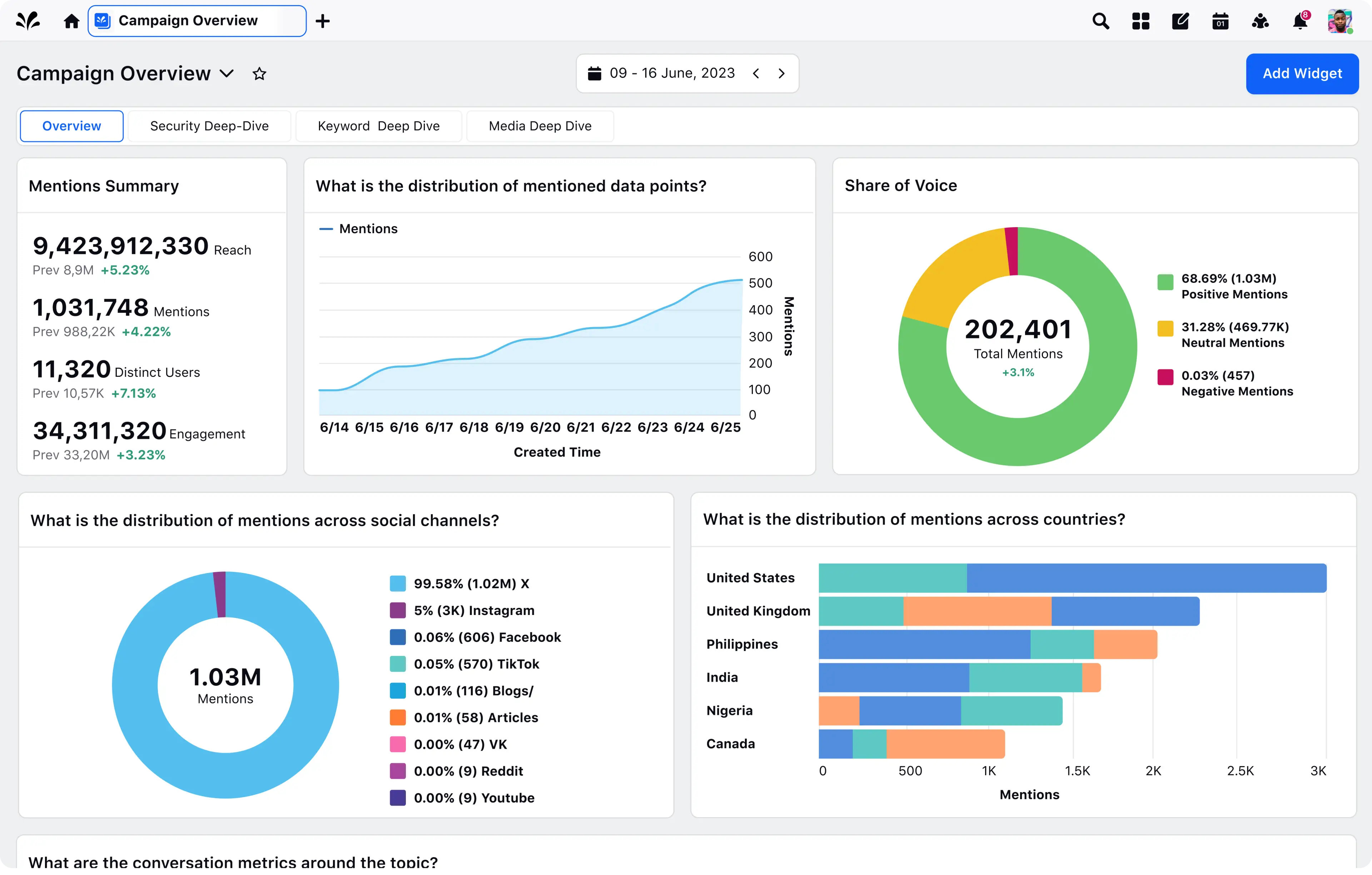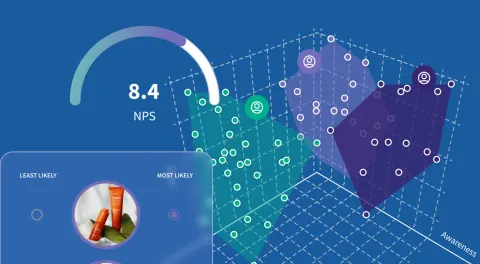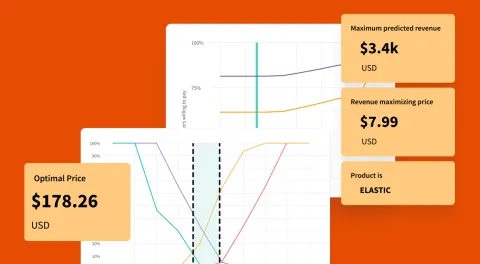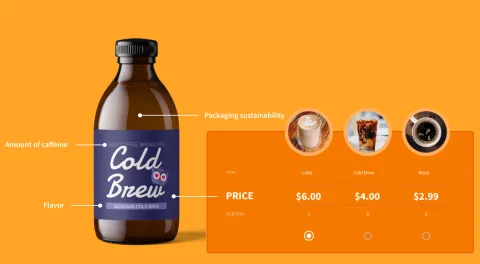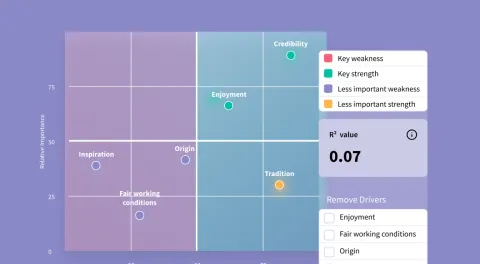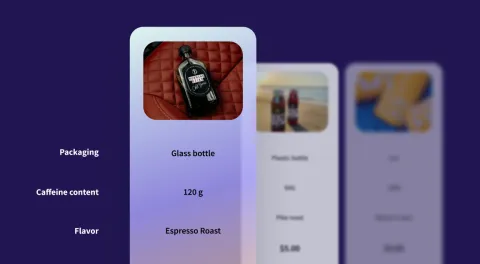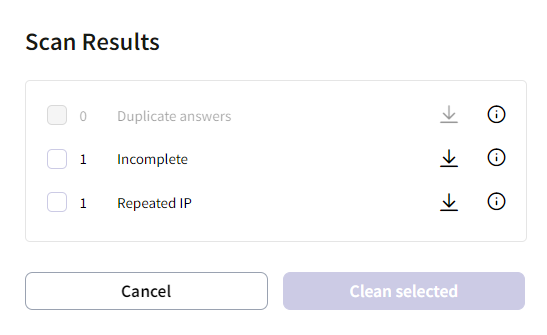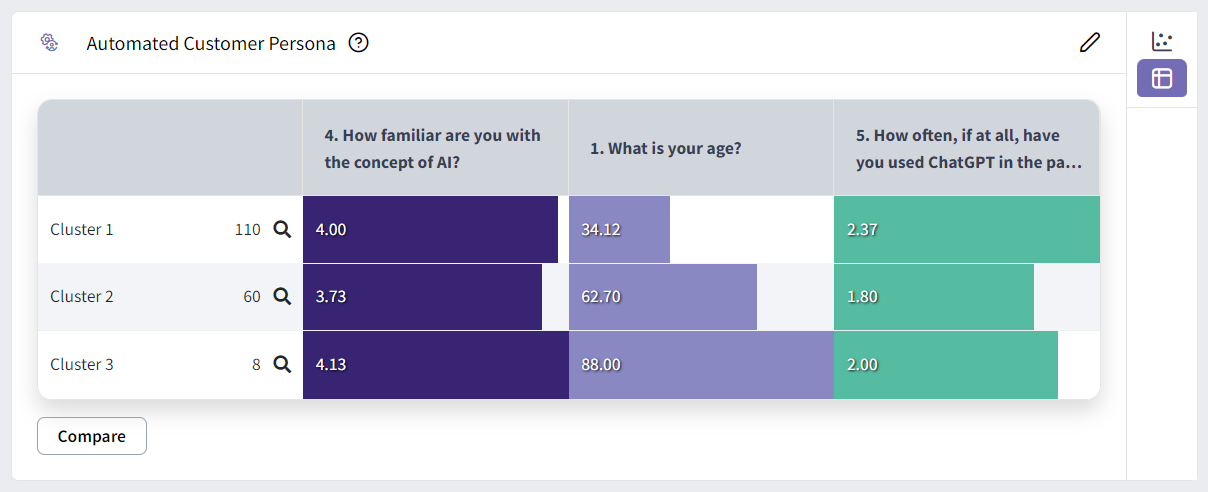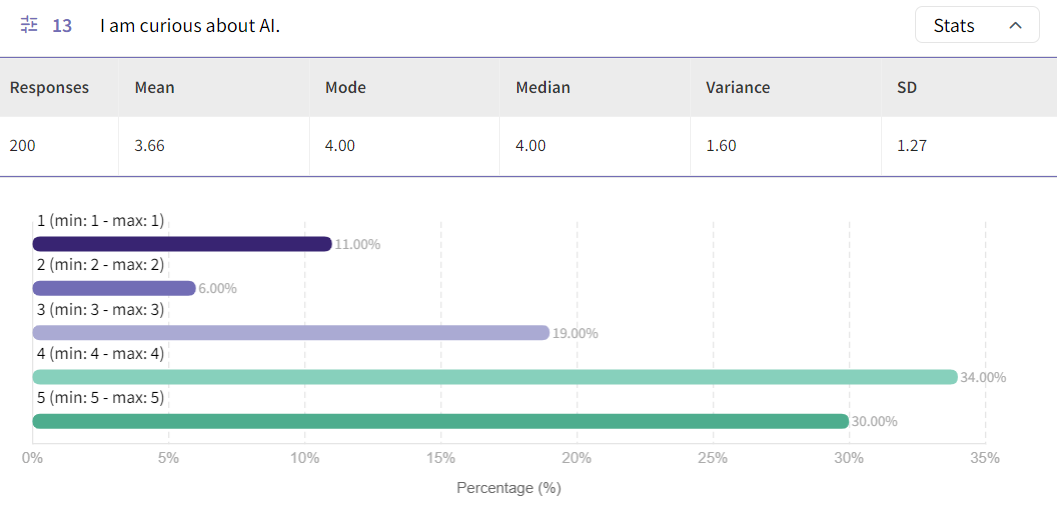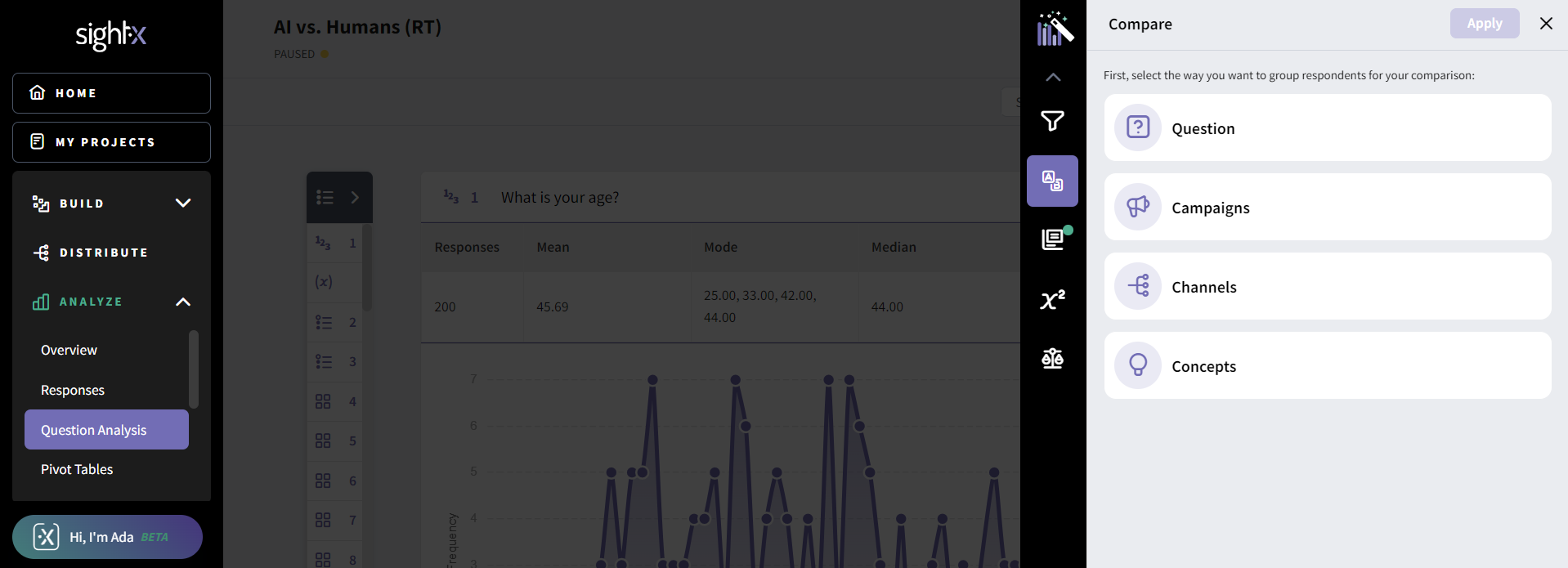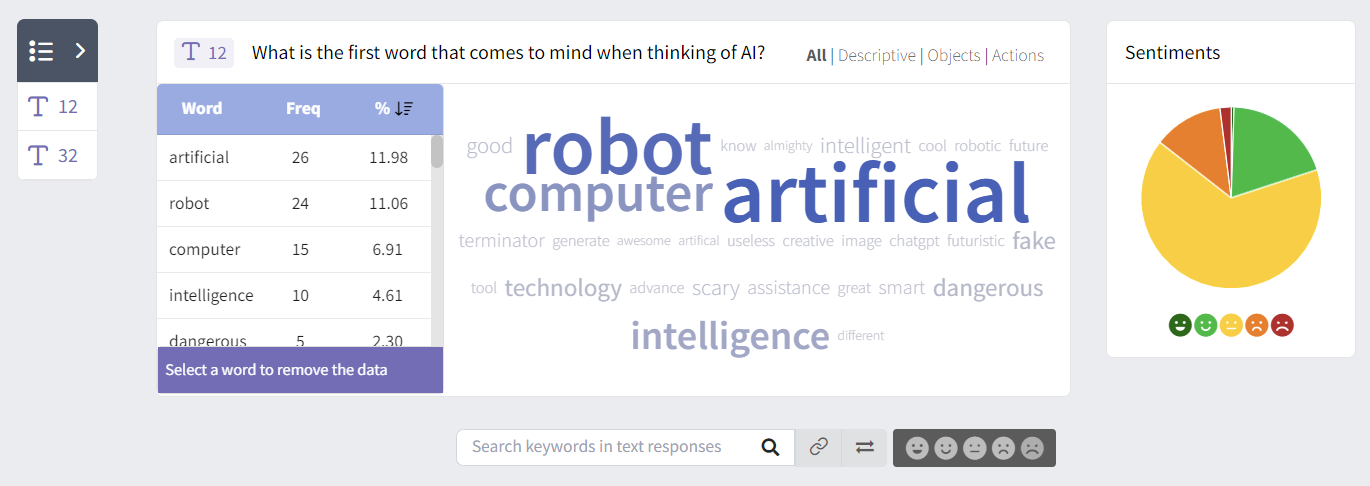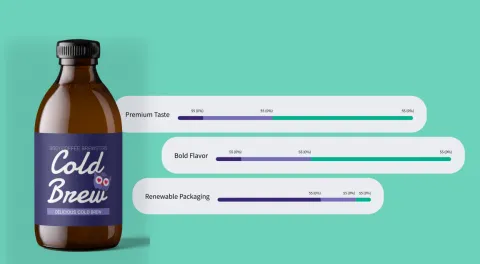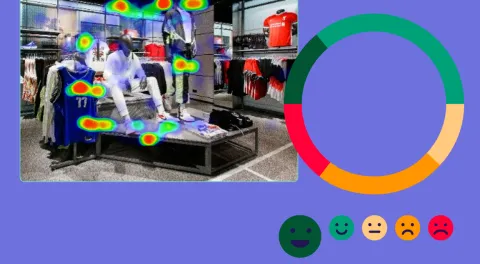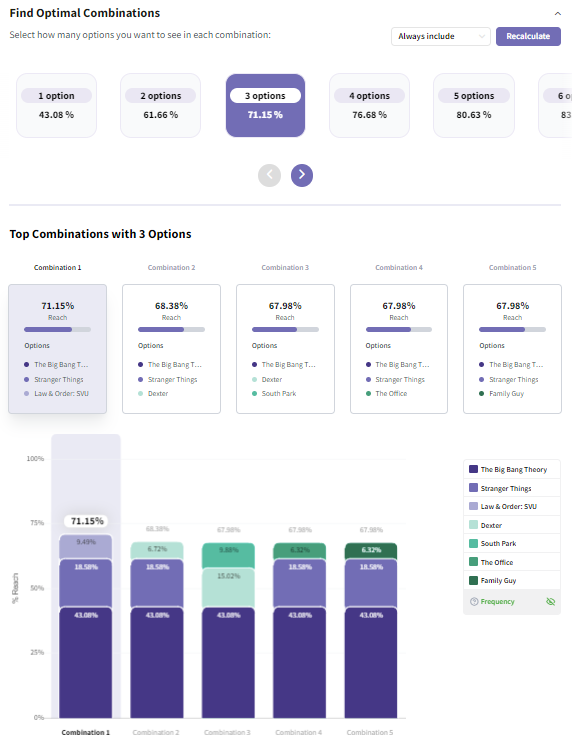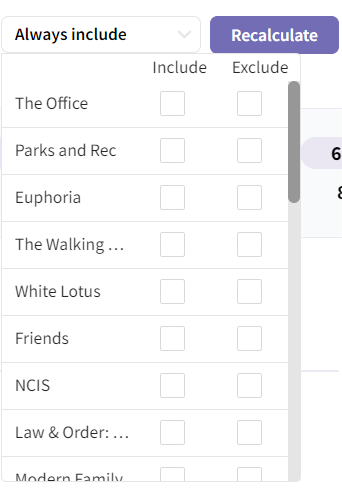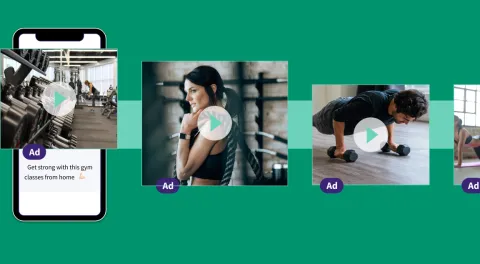In product development, concept testing is one of the most valuable (and versatile) market research tools you have available. Today, we'll take you through each stage of product development, offering tips on using concept testing at each step and helping you build products that sell.
The Product Development Cycle
First, it's important to note: there is no single one-size-fits-all product development roadmap. There are, however, some universal milestones that every product will hit on its journey to launch.
The stages outlined below are rarely completed in a clean sequential order. Teams may find themselves heading back to the drawing board on prototypes or messaging, which is entirely normal! Focusing on developing a great product with audience feedback looped into every stage is much more important than launching your product at lightning speed.
Ideation
This is the initial stage in which entrepreneurs or businesses develop their product ideas. This can be done organically through a brainstorming session or using market research to evaluate whitespace opportunities in a given market.
Product Prototyping & Design
In this stage, companies take their idea and scope, refine, and physically design a product.
Messaging
Your messaging can majorly impact your sales, marketing, and advertising efforts. So, nailing down the right positioning early in your development can make a big difference.
Post-Launch Enhancements
The product development work doesn't always stop after launch day! For digital offerings especially, ongoing enhancements and updates are essential to your product strategy.
What is Concept Testing and Does It Help Product Development?
Concept testing is the process of evaluating a concept to better understand how it will be received by people in your target market. Concept testing helps you learn how consumers perceive your idea, providing direct feedback on its viability, likeability, and the likelihood that people will purchase it.
Concept tests are an extremely versatile experiment and can be applied in many ways and across nearly every stage of your product development process. In fact, it's such a powerful experiment that over half of SightX users regularly utilize this feature.
Concept Testing Through Every Stage of the Product Development Cycle
Product Ideation
Before you have a product, or even a prototype, you have an idea. Sometimes, you have a few ideas- all set on fulfilling the same unmet market needs. This is when you will want to focus on eliminating low-potential ideas and choosing the best to develop further.
In early-stage concept testing, you can share descriptions and rough creative mock-ups of your product ideas with your target market. From there, the respondents will answer questions that give you targeted feedback on the concept's appeal, usefulness, and their likelihood to purchase it.
Once the data is collected, you can rank the overall performance of each concept. Make sure to take your time and carefully analyze the feedback from your respondents. Not only will this help you see which concept won, but you can also learn why respondents preferred it.
Similarly, take a look at the respondents who were most enthusiastic about your winning concept. Look for commonalities and differences between those respondents to identify an ideal customer archetype. While it can be helpful to rely on demographic or geographic indicators to segment your audience, other times, it's recommended to try utilizing behavioral and psychographic data points instead, which can be much more powerful.
Product Prototyping
Once you have a winning product concept, it's time to build your prototype. No matter the type of product you're developing, customer experience is vital to adoption, loyalty, and growth. So whether you're building a physical product or a user interface, it must be something your target market will understand and want to use.
During these rounds of concept testing, you will want to share your prototype and get feedback on the look/feel, design, features, and customer experience.
To find the right set of product features that excite your target audience, you'll need to ask them. Expose your respondents to individual features or feature sets you're considering. Have them provide targeted feedback on their preferences, likeliness to buy, and the usefulness of each feature.
You can also add heatmaps to your concept tests at this stage. This will allow you to track where and how they engage with each concept directly. Expose respondents to messaging and visuals related to your prototype, and have them click the areas that drew their attention first, leaving comments on specific elements they like or dislike.
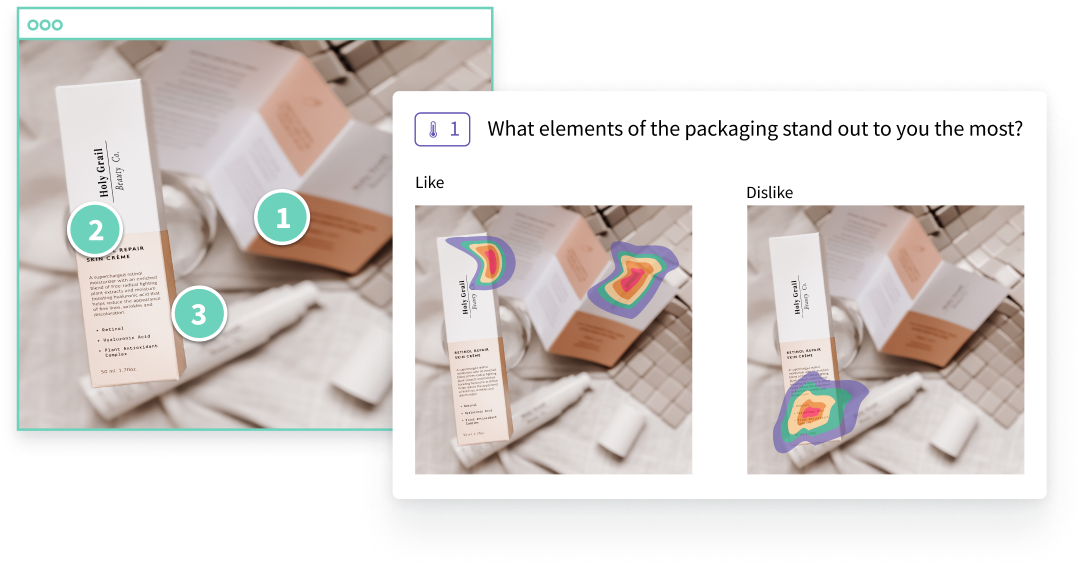
Your results will look something like the graphic above. This will provide rich data on what people first notice, focus their attention, and what compels them most—ultimately helping you fine-tune the details of your prototype.
Product Messaging Development
If you want your product to sell, you'll need to present it in a way that feels natural for consumers. This means you must identify messaging that resonates with your target market.
When you begin to develop your product messaging, think about how your product will improve your customers' lives. Put yourself in their shoes: Who are they? Why would they use your product? How is it going to help them? If you start by putting customer outcomes at the center of your messaging strategy, you set yourself up for success.
After you've developed at least two messaging options, it's time to see how your market feels about them. During this round of concept testing, you will share product messaging, advertisements, and other materials with respondents to collect both quantitative and qualitative feedback. After sharing your collateral, you may ask questions like:
_Size=sm)_Color=Success.png) On a scale of 1-10, how unique is this messaging?
On a scale of 1-10, how unique is this messaging?
_Size=sm)_Color=Success.png) On a scale of 1-10, how clear is this messaging?
On a scale of 1-10, how clear is this messaging?
_Size=sm)_Color=Success.png) On a scale of 1-10, how much do you like this messaging?
On a scale of 1-10, how much do you like this messaging?
_Size=sm)_Color=Success.png) On a scale of 1-10, how likely are you to purchase this product?
On a scale of 1-10, how likely are you to purchase this product?
Often, this stage can involve multiple rounds of experimentation, each building upon the next. The process will allow you to perfect your messaging and differentiate yourself from competitors.
Post-Launch Improvements and Updates
Depending on the type of product you're developing, providing consumers with post-launch ad-ons, enhancements, or UI/UX updates may be appropriate. This is especially popular with digital offerings.
After launch, you will want to combine Voice of the Customer (VoC) research with your concept testing efforts. This means collecting feedback from your current customers to better understand how they feel about your product.
To understand where your product (and brand) stand with consumers, run a Net Promoter Score (NPS) study. And if you're looking to understand consumer preferences for attributes and feature combinations, try using maxdiff and conjoint analysis. This data can be fed back into your updates and subsequent concept testing.
Add an optional open-ended question to ask customers why they responded the way they did. This will help you understand where your gaps are, what may confuse your customers, and what they feel is missing.
Altogether, this will tell you what is working well and what isn't. With this combination of feedback, you can easily create a list of your product's fixes, updates, and enhancements.
Once you begin outlining these new enhancements, it is time to re-introduce concept testing to the mix. Just as you had earlier, expose respondents to the new mock-ups- just this time, they are for your upgrades. From there, ask follow-up questions related to the uniqueness, likeability, or design to better grasp how your customers feel about your ideas. Consider using heatmaps to test your updates and the messaging surrounding them.
Broaden your research to a sample larger than just your current customers, and you can answer an entirely different set of questions. Use concept tests to compare your product against competitors to determine what consumers prefer and why. You can then feed that data right back into your development cycle.
Concept Testing Tips for Product Development
Experiment design is key to getting the most accurate and impactful data.
The objective of any study is to elicit high-quality feedback from a target population. While that may sound simple, designing a practical concept test takes planning and forethought. But that doesn't mean it has to be complicated; just follow these steps:
Set Smart Goals
Before you begin the research process, gather your stakeholders. Depending on your stage of development, this can include members of your product, marketing, sales, or finance teams. Work together to set clear goals and objectives for your research.
Ask yourselves questions like: what are we gathering feedback on, specifically? What kind of responses do we want to collect? How are we going to use the data once it's collected? And what metrics do we want to measure? For product development, metrics could include:
_Size=sm)_Color=Success.png) Purchase Intent
Purchase Intent
_Size=sm)_Color=Success.png) Value
Value
_Size=sm)_Color=Success.png) Uniqueness
Uniqueness
_Size=sm)_Color=Success.png) Appeal
Appeal
_Size=sm)_Color=Success.png) Innovation
Innovation
_Size=sm)_Color=Success.png) Quality
Quality
_Size=sm)_Color=Success.png) Relevance
Relevance
Similarly, use this time to discuss your budget, timelines, expectations, and even the concepts you plan on testing. With this information, you can lay a strong foundation for your research with buy-in from every stakeholder.
Design an Experiment That Meets Your Needs
Next, you will need to decide on the parameters and design of the experiment itself. As a general best practice, each respondent should not be exposed to more than three concepts. Share any more, and you run the risk of respondent fatigue, which research shows can seriously degrade your data quality.
Subsequently, you'll need to select a concept testing methodology that fits your project best. Two of the most commonly used are monadic and sequential monadic design. Each has advantages and disadvantages depending on your goals.
With a monadic design, the pool of respondents is split into groups, one for each concept. Each group is shown only one product concept and asked follow-up questions to evaluate the concept. Once the data is collected, you can compare the results for each concept and choose the winner.
Because each respondent is only shown a single concept, you can ask more in-depth follow-up questions while still keeping the experiment short. This keeps things simple for respondents while still providing you with detailed feedback on every concept. Plus, there is no chance for interaction effects or bias.
However, there are some drawbacks. Monadic testing often requires a larger sample size, which will drive up the cost and lead time.
You should use a monadic concept testing design if:
_Size=sm)_Color=Success.png) You only have a few concepts you'd like to test
You only have a few concepts you'd like to test
_Size=sm)_Color=Success.png) You have the means or budget to capture feedback from a large sample
You have the means or budget to capture feedback from a large sample
_Size=sm)_Color=Success.png) There are multiple points of feedback you'd like to gather on each concept
There are multiple points of feedback you'd like to gather on each concept
With sequential monadic design, respondents are exposed to two or more concepts. Each concept is presented in random order and followed by a short set of questions. After the data is collected, you simply compare each concept to find your winner.
Sequential monadic design is often the more efficient choice for researchers. Because each respondent evaluates multiple concepts, you can use a smaller sample, reducing cost and lead time. Similarly, having respondents compare and rank your concepts can give you a deeper understanding of your audience's preferences.
On the other hand, sequential monadic design severely limits the number of in-depth follow-up questions you can ask about each concept. And even if you limit your questions, testing multiple concepts can easily lead to respondent fatigue, jeopardizing your data. Similarly, even randomization cannot wholly eliminate the order bias, which can further degrade the data quality.
You should use a sequential monadic concept testing design when:
_Size=sm)_Color=Success.png) There are several concepts you need to test. This is especially true during the early stages of product development when you need to test a batch of concepts without a large panel.
There are several concepts you need to test. This is especially true during the early stages of product development when you need to test a batch of concepts without a large panel.
_Size=sm)_Color=Success.png) You are limited by your schedule or budget.
You are limited by your schedule or budget.
_Size=sm)_Color=Success.png) You only have a few questions you'd like to ask about each concept.
You only have a few questions you'd like to ask about each concept.
Next, you must determine the time of exposure, aka the amount of time each respondent will look at your concept(s). Here, you have two choices: set a specific amount of time for respondents to view your concepts or allow them to look as long as they'd like. Both are valid options; they will just help you accomplish different goals.
If you're specifically interested in understanding how noticeable or memorable your concept is, you might want to limit the time respondents have to look at it. This allows you to ask targeted follow-up questions to determine what they noticed first and what stuck with them. The time of exposure you set greatly depends on the complexity of your concept.
Write Effective Survey Questions
After selecting your optimal experiment design, you must write the questions for your survey. No matter your stage of development or research goals, your main focus is turning your metrics into practical questions. The keyword is effective.
Keep your audience top of mind when writing your survey questions. Make sure the language is direct and easy for your respondents to understand. We find that short, specific questions will elicit a higher response rate.
Be straightforward, use short sentences, and make sure to avoid any biased, leading, duplicitous, or hypothetical language. Similarly, avoid any "jargon" that may surround your industry or product.
If you want to learn more about writing effective survey questions, check out our guide here.
Field Your Concept Test with the Right Audience
Your audience may vary depending on your development stage, goals, and budget. If you are a smaller company looking for some very early feedback on your product idea, consider asking business associates, trusted friends, and connections for anonymous feedback. This can be a great (and free) way to gather some initial data to guide your product development.
Once you're ready for wider testing, you will need to choose a sample. This sample could be representative of your target market if you already know it. If not, you can choose to set broader parameters for your sample to gather feedback from the most diverse set of respondents.
If you're testing post-launch enhancements and updates, try fielding your survey to loyal customers first. You will still want to test a larger population later, but the insights gleaned from those who spend the most time with your product can be invaluable.
Thoroughly Analyze Your Concept Testing Results
After collecting your data, the first step is to rank the overall performance of each concept simply. Was there a clear winner and loser? How were the results distributed across each concept? Were there any surprising findings? This information will tell you which of your concepts "won" with your survey sample. It will also help you uncover why that concept was the most popular.
If you originally surveyed a broad sample, take the time to look at each segment that is important to your brand. Did their preferences align with or differ from the larger sample? Was their preferred concept different from the overall winner? How did their responses differ from the rest of the sample? Understanding how your segment(s) uniquely perceive your product concepts is crucial, especially when developing your features, UX, and messaging.
Concept Testing with SightX
Historically, research and insights work was costly, time consuming, fragmented, and not widely shared....so we decided to change that.
SightX is an AI-driven market research platform offering a single unified solution for product, brand, marketing, and pricing research. While powerful enough for insights teams at Fortune 500 companies, our user-friendly interface makes it simple for anyone to start, optimize, and scale their research.
With our new Generative AI consultant, Ada, you can harness the power of OpenAI's GPT to transform your marketing research and insights. Collaborating with Ada is like having an expert researcher, brilliant statistician, and ace marketer on your team, helping you ask the right questions, choose the best experiments, pick out key insights, and seamlessly apply them to your business.
